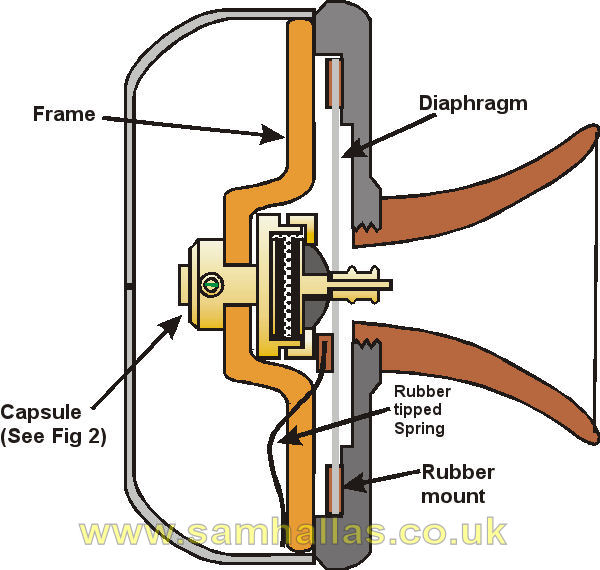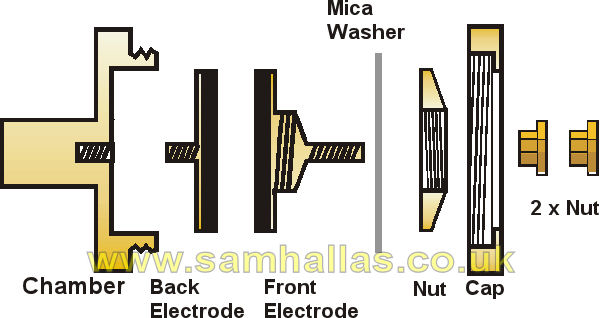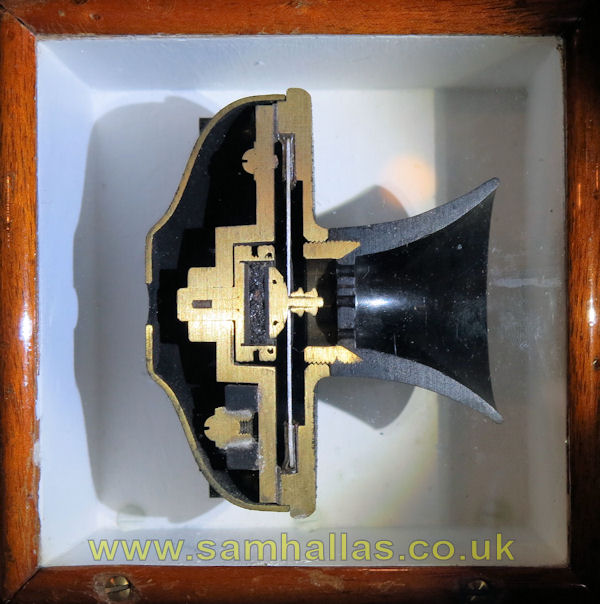
Fig 1. The Solid back transmitter in Section

Sam Hallas' Website
Although the Hunnings-Cone transmitter, described in the previous part, was an improvement on its predecessors, the Bell company continued development. Anthony White, a Bell employee patented this transmitter that became known as the Solid Back. [click the images for a larger view]

Fig 1. The Solid back transmitter in Section
Fig 1 shows the general arrangement. The capsule containing the carbon granules is bolted firmly to a metal frame – hence the name solid back. The front of the capsule is attached to a light aluminium diaphragm, supported in a rubber ring, which receives the incoming sound.

Fig 2: Exploded diagram of Capsule
The capsule is formed from a chamber lined with paper coated in shellac varnish for electrical insulation. The two electrodes are buttons of hard carbon with a high polish. Each is copper plated on one side and soldered to a brass disc. The back electrode has a stud which screws into the chamber housing. The front electrode is clamped by a nut to a thin mica washer which retains the carbon granules whilst allowing the electrode to move like a piston in the granule chamber.
A threaded stud projects from the front electrode allowing it to be fixed to the aluminium diaphragm. A threaded cap fits over the whole chamber to retain the electrode and granules in place. One or more flat, rubber-tipped springs press on the diaphragm to damp any persistent vibration.
The Solid Back was a most efficient transmitter for its day and began to replace the Blake transmitter from the 1890s onwards. It was used by the British Post Office on their telephones No 1 and No 2. It remained a standard BPO transmitter for central battery telephones until overtaken by the inset transmitter No 10 in the late 1920s.

Solid back transmitter in section
on display in the Science Museum
Telephony, Part V, The substation, Arthur V. Abbott, McGraw Publishing, New York, 1904
U.S. Patent 485,311
Figs 1 & 2 is redrawn SMH from diagram in Abbot, Fig 2 from the US Patent.
Fig 3 is © 1916 The Telephone Review, Fig 4 Photo © 2013 SMH
This article was published in the Telecommunications Heritage Journal Issue 75, Spring 2012
 The Hunnings
Transmitter Inset Nos 10 & 13
The Hunnings
Transmitter Inset Nos 10 & 13